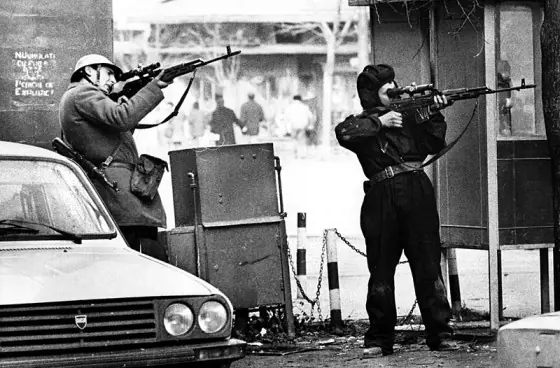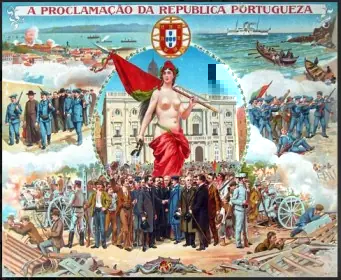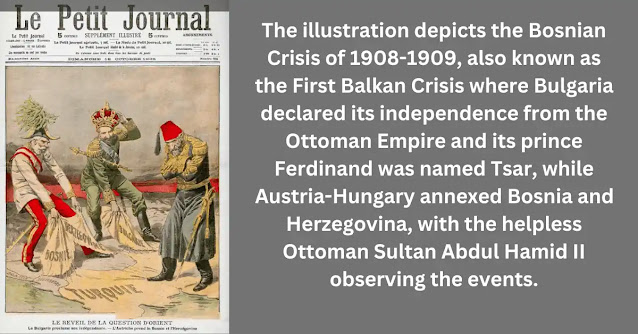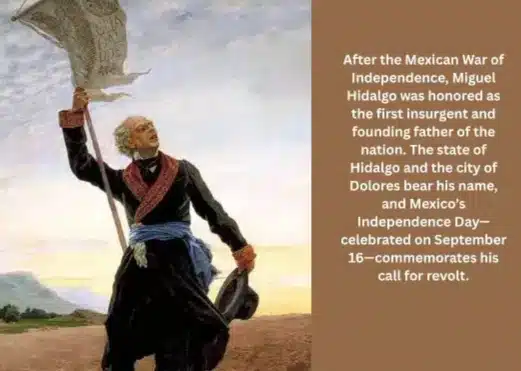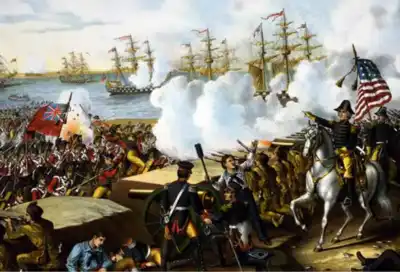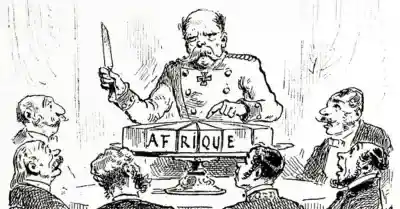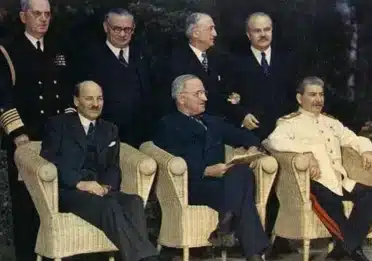The Battle of Dumlupınar and Beyond
Turkey, with its rich history and unique geographical position bridging Europe and Asia, has witnessed numerous critical events that have designed its new map. One such pivotal event is the August 30 Victory Day, which recognizes the Battle of Dumlupınar and the return of Turkish sovereignty in Anatolia.
 |
| Image Credit: Flickr: Kemal Atatürk observing the Thrace military exercises, August 1937 |
In the aftermath of World War I, while other defeated Central Powers succumbed to harsh Allied settlements, the Turks stood tall, defying imposed injustices. The leader of the Turkish revolution was Mustafa Kemal Atatürk. Leading the Turkish nationalists, Atatürk played a pivotal role in the Turkish War of Independence (1919–1923), which was a historic struggle against Allied proxies. With Greece, Armenia, France, the United Kingdom, and Italy involved, it was a battle for sovereignty fought on multiple fronts. This war was sparked by the occupation and partitioning of Turkey after the collapse of the Ottoman Empire, culminating in a triumph that reshaped the course of history.
This article delves into the historical significance of the Greek military presence in Anatolia, Bolshevik support for Turkish nationalists, the Treaty of Sèvres, Mustafa Kemal’s stand, American policy, the importance of August 30 Victory Day, the Battle of Dumlupınar, the inflexible spirit of the Turkish people to oppose the supremacy of external powers, the celebration of Victory Day in Turkey and Cyprus, and the reestablishment of power in the Aegean Sea.
💻Table of Contents:
- Greek Military Presence in Anatolia and the Battle for Power
- Bolshevik Support for Turkish Nationalists
- Mustafa Kemal’s Stand & American Policy
- The Battle That Shaped Turkey’s Future
- End of Outsiders Dominance
- Reestablishing Power in the Aegean Sea
Greek Military Presence in Anatolia and the Battle for Power:
The Greek military presence in Anatolia during the outcome of World War I marked a challenging period in Turkey’s history. The Ottoman Empire’s collapse had led to an Administrative vacuum, and foreign forces, including Greek troops, occupied parts of Anatolia. The Turkish War of Independence, led by Mustafa Kemal Atatürk, emerged as a beacon of resistance against foreign occupation and the downfall of the Ottoman Empire. The presence of Greek forces in Anatolia exploded a brutal fight for sovereignty, with the Turkish people supporting behind Atatürk’s leadership.
Bolshevik Support for Turkish Nationalists:
During the Turkish War of Independence (1919–1923), Russia, under Bolshevik leadership, played a crucial role in supporting the Turkish nationalists led by Mustafa Kemal Atatürk. Between 1920 and 1922, the Bolsheviks provided substantial financial and military aid to the Turkish nationalists. This support included rifles, machine guns, artillery, ammunition, patrol boats, and significant amounts of gold and currency. The Soviets aimed to destabilize the region, prevent further Allied intervention, and spread communist ideologies. The Treaties of Moscow and Kars (1921) established the border between Turkey and Soviet-controlled Transcaucasian republics, further solidifying Soviet-Turkish cooperation. This assistance from Russia significantly contributed to the success of the Turkish nationalists in their fight for independence.
The Bolsheviks, under Vladimir Lenin, supported Turkey by providing financial and war materiel aid. Their aim was to escalate the conflict between the Allies and Turkish nationalists, thereby diverting Allied troops from the Russian Civil War. Additionally, the Bolsheviks sought to export communist ideologies to Anatolia, supporting pro-communist individuals such as Mustafa Suphi (Turkish revolutionary and communist) and Ethem Nejat (Turkish educator, revolutionary and left communist politician).
Mustafa Kemal’s Stand & American Policy:
The Treaty of Sèvres, signed in 1920 between the Allies of World War I and the Ottoman Empire, aimed to redraw the map of the Ottoman territories. It ceded significant portions of Ottoman land to France, the United Kingdom, Greece, and Italy, while also establishing large occupation zones within the empire. However, Mustafa Kemal Atatürk’s refusal to accept the terms of the treaty led to a new negotiation process. Kemal believed that the Turkish people should not be punished for the actions of the former Ottoman leaders during World War I. As a result, the Treaty of Sèvres was rejected, and fresh negotiations led to the signing of the Treaty of Lausanne in 1923, establishing new terms between Turkey and the victorious Allies. Russia was excluded from the process, and by 1920, America had withdrawn into a policy of isolation, leaving Turkey to negotiate its future independently.
The United States did not sign or participate in the Treaty of Sèvres or the Treaty of Lausanne primarily due to its policy of isolationism during that period. Isolationism was a stance adopted by the United States after World War I, where it sought to avoid entanglement in European affairs. Additionally, the US Senate rejected proposals to support Wilson’s plan for Armenia, further solidifying its decision not to participate in these treaties. Mark Lambert Bristol, the US High Commissioner in Turkey during the occupation of Istanbul, played a significant role in shaping US-Turkish relations but opposed American involvement in the region.
The Battle That Shaped Turkey’s Future:
August 30 Victory Day stands as a protest to the Turkish nation’s solid commitment to regain control of their homeland. The decisive Battle of Dumlupınar in 1922 marked a defining point in the Turkish War of Independence. Under Atatürk’s strategic leadership, Turkish forces achieved a clear-cut victory against Greek forces, ultimately ending their military presence in Anatolia. August 30 Victory Day is not just a celebration of military triumph; it represents the spirit of resilience, unity, and liable obligation to safeguarding national identity and sovereignty.
 |
| Image Credit: Wikimedia Commons: Turkish Armed Forces at the Victory Parade 2020 in Baku |
The Battle of Dumlupınar was a conflict that decided the destiny of Anatolia. Turkish forces,
under the brilliant command of Atatürk, showed exceptional tactical prowess, determination, and courage in the face of adversity. The resounding victory at Dumlupınar indicated the start of the end for foreign occupiers and invaders, setting the foundation for the modern Republic of Turkey. The battle exposed the strategic brilliance of Atatürk and the unwavering resolve of the Turkish soldiers, inspiring generations to come.
End of Outsiders Dominance:
The Turkish people’s constant opposition against repression and rule by outsiders has been deeply embedded in their history. Throughout centuries, the region has witnessed various empires attempting to exert control over Anatolia, but the spirit of resistance has never weakened. This strong determination reached its peak during the Turkish War of Independence, when the people’s unstoppable desire to protect their culture, language, and heritage became a very important force. The things that happened during the time of August 30 Victory Day show how strong this spirit of not letting outsiders take control was.
💻You May Also Read:
- Suleiman the Magnificent: Architect of Ottoman Dominance in Hungary
- Reshaping the Region: The Dynamic Legacy of the First Balkan War
Victory Day is celebrated with great passion through Turkey and on the island of Cyprus. The festivals go beyond marking a military victory; they represent the unity of the nation, the sacrifices made by its people, and the victory of self-determination. Festivities incorporate parades, concerts, and various cultural events that remind a sense of patriotism and pride. In Cyprus, the day holds particular significance due to the island’s historical ties with Turkey and its fight for recognition.
Reestablishing Power in the Aegean Sea:
The restoration of power in the Aegean Sea behind the victory at Dumlupınar had significant
geopolitical consequences. Turkey’s recharged strength in the region reshaped the dynamics of power, declaring its power and defending its interests. The victory further protected Turkey’s commitment to defense its borders and ensuring regional strength, a principle that remains relevant to this day.
 |
| Image Credit: goodfon.com: Turkish warships proudly flying the Turkish flag at sea |
This special day reminds each Turkish about the many people who gave up a lot to fight for their country’s freedom. It also showed that it’s really important to stick together, stay strong, and believe in ourselves, especially as Turkey faces the difficulties of today’s world.
While Victory Day primarily celebrates a significant event in Turkish history, its impact extends
beyond national borders. Several countries around the world, particularly those with historical connections to Turkey, recognize and observe Victory Day. Through strategic channels and cultural exchanges, the Turkish government promotes the historical significance of Victory Day, fostering international understanding and appreciation for Turkey’s battle for independence.
Conclusion:
August 30 Victory Day summarizes the essence of Turkey’s history – a story of victory over adversity, of resilience against occupation, and of the enduring spirit of the Turkish people. The Battle of Dumlupınar stands as an embodiment of strategic brilliance, boldness, and unity, shaping the destiny of a nation. As Victory Day celebrations continue to unite Turkey and Cyprus, they serve as a touching reminder of the sacrifices that led to the preservation of national identity and the defense of sovereignty. The spirit of August 30 Victory Day lives on,
inspiring generations to respect the legacy of those who battled for the freedom and dignity of the Turkish nation.
Frequently Asked Questions
In the aftermath of World War I, while other defeated Central Powers succumbed to harsh Allied settlements, the Turks stood tall, defying imposed injustices. The leader of the Turkish revolution was Mustafa Kemal Atatürk. Leading the Turkish nationalists, Atatürk played a pivotal role in the Turkish War of Independence (1919–1923), which was a historic struggle against Allied proxies. With Greece, Armenia, France, the United Kingdom, and Italy involved, it was a battle for sovereignty fought on multiple fronts. This war was sparked by the occupation and partitioning of Turkey after the collapse of the Ottoman Empire, culminating in a triumph that reshaped the course of history.
The Bolsheviks, under Vladimir Lenin, supported Turkey by providing financial and war materiel aid. Their aim was to escalate the conflict between the Allies and Turkish nationalists, thereby diverting Allied troops from the Russian Civil War. Additionally, the Bolsheviks sought to export communist ideologies to Anatolia, supporting pro-communist individuals such as Mustafa Suphi (Turkish revolutionary and communist) and Ethem Nejat (Turkish educator, revolutionary, and left-communist politician).
The United States did not sign or participate in the Treaty of Sèvres or the Treaty of Lausanne primarily due to its policy of isolationism during that period. Isolationism was a stance adopted by the United States after World War I, where it sought to avoid entanglement in European affairs. Additionally, the US Senate rejected proposals to support Wilson's plan for Armenia, further solidifying its decision not to participate in these treaties. Mark Lambert Bristol, the US High Commissioner in Turkey during the occupation of Istanbul, played a significant role in shaping US-Turkish relations but opposed American involvement in the region.
The leader of the Turkish revolution was Mustafa Kemal Atatürk. Leading the Turkish nationalists, Atatürk played a pivotal role in the Turkish War of Independence (1919–1923), which was a historic struggle against Allied proxies. What was the purpose of the Turkish War of Independence?
Why did the Bolsheviks support Turkey?
What was America's role in the Turkish War of Independence?
Who was the leader of the Turkish revolution?

